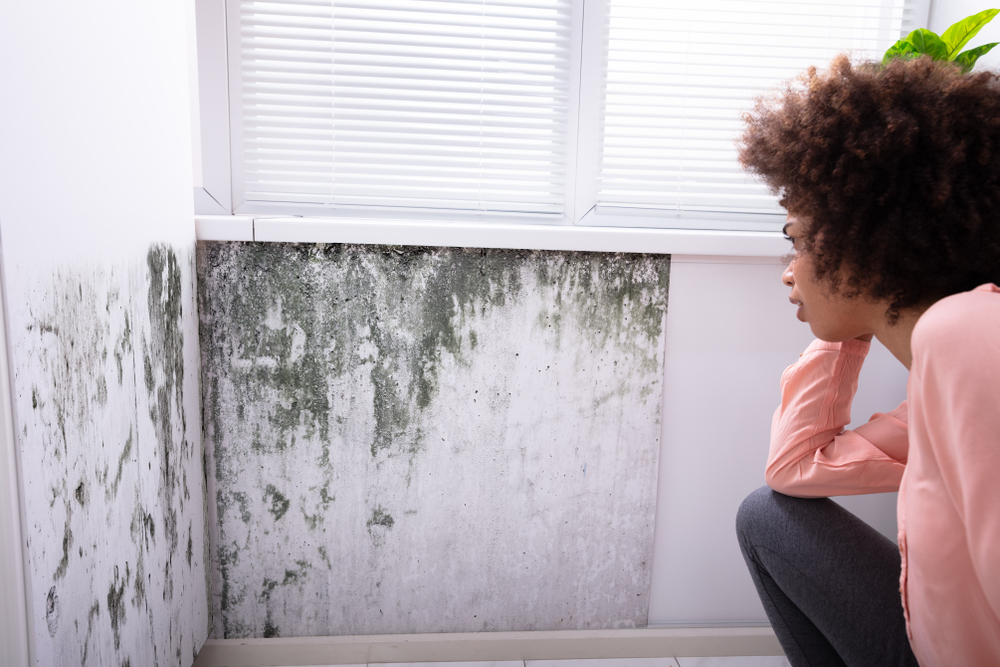Black mold, a common household menace, is often unnoticed until it starts affecting your health. It lurks in damp, poorly ventilated areas, slowly releasing spores that can have severe implications for lung health. Understanding the link between black mold exposure and respiratory issues is crucial for maintaining a safe and healthy living environment. This article delves into the effects of black mold on the lungs, how it exacerbates existing respiratory conditions and proactive measures to safeguard your health.
What is black mold?
Black mold, scientifically known as Stachybotrys chartarum, is a type of fungi that thrives in moist environments. It is typically black or dark green and is known for its musty, mildew-like odor. Black mold grows on materials with a high cellulose content, such as wood, gypsum board and paper. Its growth is often a result of excessive moisture, whether from water leaks, floods or condensation.
Recognizing the health impacts of black mold
Symptoms of black mold exposure
Exposure to black mold can lead to various health problems, particularly affecting the respiratory system. Common symptoms include:
- Chronic coughing and sneezing
- Irritation of the eyes, nose and throat
- Frequent headaches
- Skin rashes
- Persistent fatigue
- Respiratory distress
In people with asthma or other respiratory conditions, these symptoms can be more severe, leading to acute asthma attacks or worsening of chronic respiratory disease.
Long-term effects on lung health
Long-term exposure to black mold spores can lead to more serious health issues. These include the development of mold-induced asthma, allergic bronchopulmonary aspergillosis and hypersensitivity pneumonitis. It is essential to recognize these risks early to prevent permanent damage to lung tissue.
How black mold affects different groups
Impact on children and the elderly
Children and the elderly are particularly susceptible to the effects of black mold. Their immune systems are either developing or in decline, making them more vulnerable to the toxins produced by mold. In children, prolonged exposure can lead to lifelong respiratory conditions.
Vulnerability of individuals with preexisting conditions
Individuals with chronic respiratory conditions such as asthma or chronic obstructive pulmonary disease (COPD) are at increased risk. Black mold can trigger severe reactions, including respiratory failure in extreme cases.
Preventative measures and remediation
Detecting and eliminating black mold
Preventing black mold involves controlling moisture levels in the home. Use dehumidifiers and ensure adequate ventilation, especially in areas like kitchens, bathrooms and basements. Regularly inspecting plumbing and roofs for leaks can also prevent mold growth.
Professional remediation
If black mold is found, it’s often advisable to hire professionals to remove it safely. They have the tools and techniques to eliminate mold thoroughly while preventing its spread to other areas.
The lowdown on black mold
The risks associated with black mold, especially in terms of lung health, are significant yet controllable. Early detection and timely action are essential in mitigating the health threats posed by mold exposure. Symptoms such as persistent coughs, eye irritation and unusual fatigue should prompt immediate inspection and action to identify and remove mold sources. Emphasizing regular home maintenance and effective moisture control can substantially prevent the proliferation of black mold.
Proactive measures — such as using dehumidifiers, ensuring proper ventilation and fixing leaks promptly — play a crucial role in combating mold growth. It is also advisable to conduct periodic checks in prone areas like basements, bathrooms and kitchens to catch and address mold growth early. In instances where mold contamination is significant, professional remediation becomes necessary to safely and thoroughly eliminate mold and prevent future infestations.
By adopting these practices, you can safeguard the health of your family from the adverse effects of black mold. A clean, dry, and well-maintained living environment is your best defense against the potential dangers of mold. Let this guide serve not just as a source of information, but as a call to action to maintain a healthy, mold-free home.






2 Responses
I’m living in a house with Mold and Mildew and in the house that I stay in, I can’t I need help because the Landlord knows about it but she want do anything about it all she thinks about is the rent and and that’s all, and I don’t have any money to get another place to stay in and this needs to be comedim all of her houses need to be comedim because she not going to fix them.I been in this house for six years and they haven’t check on it , Please don’t post my name because I don’t have anywhere to go and she will put me out of she know that I post this and my son and I had to wash dishes and take a bath in the bathroom its so much that I’m so tried but I just don’t have any money to move plus it’s hard to find a place to stay. Thank God for this page too show up.
Mold MITE’S…Come with this as well…Hard, to control…Fighting now, to breathe… Mite’s are tearing me up ..Dr is Unknowledge…to even know this…